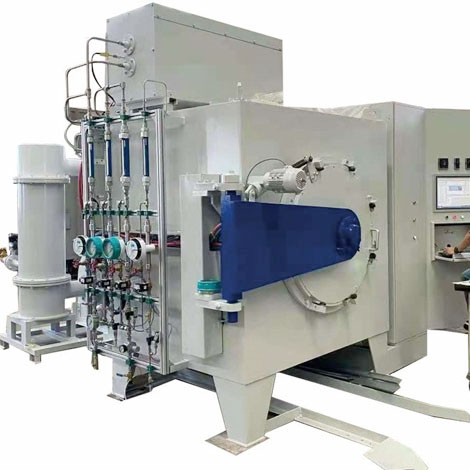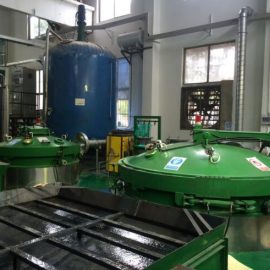Preparation Work Before Gas Nitriding Of Workpiece
Principles for determining preparatory processing:
1. Generally, structural steel parts are quenched and tempered. The high temperature tempering temperature should be 20~40℃ higher than the nitriding temperature, and the holding time should not be too long.
2. For parts with low impact toughness requirements, normalizing can be used, but the cooling rate of normalizing is faster, and parts with larger cross-sectional dimensions cannot be normalized.
3. 38CrMoAl steel should be quenched and tempered, otherwise needle-like nitrides are likely to appear in the nitriding layer. Before nitriding, the tool and die steel must be quenched and tempered, and annealing is not allowed.
4. For slender, thin-walled, complex and precise parts, one or more stress relief treatments must be performed before nitriding. The stress relief temperature is generally lower than the quenching and tempering temperature and higher than the nitriding temperature. If the deformation is out of tolerance after treatment , after the correction, the stress is removed again according to the original process, until the deformation is completely qualified.
Ready to work:
1. Equipment preparation
1) Before nitriding, conduct a comprehensive inspection of temperature control instruments, liquid ammonia bottles, flow meters, ammonia decomposition analyzers, and various pipeline systems to ensure the normal operation and use of the equipment. The temperature difference in the furnace should be less than 10 °C
2) Calcium oxide, calcium chloride, etc. are commonly used as desiccants, and roasted calcium oxide is commonly used. If it fails, it should be replaced or dried.
3) It is better to use liquid ammonia with a volume fraction of water in the nitriding medium less than 0.2%
4) Prepare the spreader according to the shape, size, quality and technical requirements of the parts, carefully check whether it is in good condition and reliable before use, and clean it.
2. Preparation of parts
1) The surface roughness of nitriding parts is Ra1.6μm or less, and the surface must not have defects such as scratching, bumping and rusting. Parts that cannot be treated in time must be oiled to avoid rusting.
2) For parts that are easily distorted, the amount of distortion should be predicted and recorded
3) The material and pre-heat treatment of the sample are the same as the parts, the size of the sample is ф(20~30)mm×(6~10)mm, the samples are 3~5, and the numbers are placed in different representative positions
4) Carefully clean the parts, and clean them with clean gasoline when they are hoisted into the furnace to ensure the cleanliness of the parts
5) Put the cleaned parts into the nitriding furnace, and the slender rods that are easily deformed must be hung vertically with uniform spacing, do not block the exhaust holes, and the parts must not exceed the scope of the effective heating area.

Several Matters Needing Attention In Gas Nitriding Process Quenching Oil Tank Oil Fume Purification Device QPQ Salt Bath Liquid Nitriding Process Quality Defect Analysis


Contact us
Your email address will not be published. Required fields are marked *